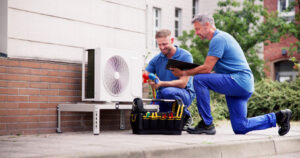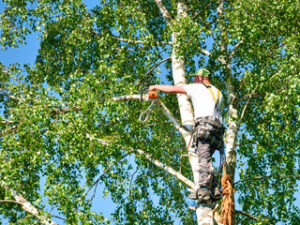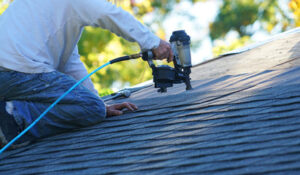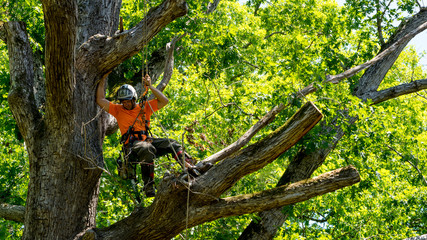Every homeowner needs to hire a professional to pressure wash their home once in a while. It is the best way to remove accumulated mildew, dirt and other buildups. This helps in extending the life of paint jobs and in keeping your property looking attractive.

Power washing uses heated water to clean a wide variety of surfaces including concrete, wood and vinyl siding. Before starting, it is important to scan your surroundings and cover nearby vegetation to protect them from direct spraying. Visit Website to learn more.
Over time, dirt, grime, moss, mildew, and other substances can build up on the outside of your home or business, leaving surfaces discolored, stained, or damaged. Regular pressure washing is an effective way to remove these harmful substances from surfaces, protecting them and extending their lifespans.
Unlike a standard garden hose, a professional pressure washer uses high-powered jets of water to blast away built-up debris, contaminants, and other substances. This method of cleaning is much more effective than simply scrubbing surfaces, and it allows for the safe removal of even the most stubborn stains. In addition, professional pressure washers use adjustable pressure settings and nozzles to ensure that sensitive surfaces like vinyl siding and wood are not damaged by excessive force.
Cleans Slippery Surfaces
Having dirty walkways, decks, and porches can actually be dangerous for your family and guests. The slime buildup that accumulates on surfaces like moss or algae can create slippery conditions, increasing the risk of falls and injury. By regularly cleaning these surfaces with the help of a professional pressure washing service, you can eliminate these hazards and keep your family and guests safe.
Prevents Damage
Over the course of time, dirt and other debris can slowly but surely erode the surface coatings on exterior surfaces, such as paint and concrete. This can lead to rot, cracks, and other structural damage. Regular pressure washing is an effective way to protect these materials and extend their lifespans, reducing the need for costly repairs and replacements.
Increases Curb Appeal
A dirty house or office can be off-putting to visitors, and a clean space is inviting and welcoming. Pressure washing is an excellent way to give your building or home a fresh new look that will impress guests and potential buyers alike.
As we all know, curb appeal is important when it comes to selling a property. A clean and well-maintained exterior is a great way to boost your property’s value and attract more buyers. A clean building also serves as a good prep step before painting projects, ensuring that the new coat of paint will adhere properly to the surface.
Time-Saving
Pressure washing, also known as power washing, is a fast way to remove built-up grime, dirt, mildew, and mold from surfaces around your home or business. It’s a powerful cleaning method that can be done on a variety of surfaces, including concrete, wood, and siding. It’s important to understand how to use pressure washers safely to avoid damaging your property and surroundings.
Pressure washers are a powerful tool that can be used to blast away surface dirt and debris quickly, but it’s important to know how to use them safely. It’s also important to choose the right pressure washer for your job. There are many different types of pressure washers, each with its own unique features and benefits.
For example, cold water pressure washers are generally safer for use in residential areas because they do not generate as much heat as hot water pressure washers. However, cold water machines may not be as effective at removing oil-based stains from concrete. Hot water pressure washers, on the other hand, can be extremely effective in removing stubborn stains and grime from industrial kitchens or other hygienically sensitive areas.
If you’re unsure which type of pressure washer is best for your needs, consult with professionals. They can help you determine which equipment and supplies are needed for your project, as well as provide safety tips for using the machine. They can also recommend the appropriate nozzle and power settings for your specific surface.
In addition to being a fast and easy way to clean, pressure washing can save you money. It’s a lot less expensive than purchasing or renting cleaning solutions that can be toxic to the environment. Plus, you’ll spend less time on labor-intensive tasks like scrubbing and can instead focus your efforts on other projects.
Regularly pressure washing your home or commercial property can boost curb appeal and keep organisms like mold, mildew, and algae at bay. This can lead to a healthier and more comfortable living or working environment for you and your guests. Getting into the habit of regularly pressure washing can be as simple as scheduling it on your calendar or setting up a maintenance schedule with a professional company.
Environmentally-Friendly
Pressure washing does not rely on harsh chemical cleaners, eliminating the risk of them seeping into Cleveland’s soil and waterways. Instead, it uses powerful pressurized water to effectively remove grime and dirt from surfaces. This environmentally friendly cleaning method promotes a healthier environment and helps to keep your property safe for pets, children, and other loved ones.
Environmentally-friendly pressure washing uses biodegradable detergents to break down and lift stains without harming the surrounding environment. This is a responsible choice, especially in a city like Cleveland that is so close to Lake Erie and other natural habitats. Biodegradable detergents are also safer for your family and pets, ensuring that harmful chemicals do not wash off the surface and into your yard or waterways.
As a sustainable cleaning solution, eco-friendly pressure washing reduces water waste by using adjustable nozzles that optimize energy efficiency. The high-pressure power of the washer eliminates the need for massive amounts of water, which is a valuable resource in an area where droughts are becoming more common. Additionally, many eco-friendly solutions use heated water, further reducing water consumption and supporting sustainability.
Additionally, many eco-friendly products work well at lower pressure settings than traditional cleaners, allowing them to be used on various surfaces while protecting delicate materials from damage. These low-pressure settings prevent surface etching, chipping, gouging, and other issues that can be caused by using too much force during a pressure washing.
Unlike traditional cleaners, which often rely on caustic substances to lift stains, eco-friendly detergents utilize biological reaction mechanisms to break down and lift debris. These non-toxic formulas work effectively in hard or soft water and rinse free of film, resulting in an overall more sustainable solution.
Many eco-friendly cleaning methods also minimize the risk of runoff and pollution by using water containment systems that trap contaminants before they can enter local ecosystems. This is a huge benefit for Cleveland and other cities with limited freshwater supplies, preventing the runoff of harmful chemicals into lakes, rivers, and oceans. Similarly, using the right cleaning equipment and following best practices can reduce the amount of oil or gas used during a pressure washing job, further minimizing environmental impact.
Affordable
Affordable pressure washing is a surprising and gratifying way to discover how many things, areas, and surfaces are immaculately cleanable. Whether it’s your car or your boat, affordable pressure washing can breathe new life into these often overlooked items and spaces.
A professional can inspect your home or business to determine the proper psi, water flow, cleaning products, and water rotation to safely and effectively wash your property. The heat and pressure of power washers can damage delicate surfaces if not used correctly. The pressure and temperature can also kill surrounding vegetation. A professional knows how much psi to use for various surfaces, what cleaning products are safe, and how to keep the nozzle at an appropriate distance.
The most commonly used consumer pressure washers can be electric or gas powered and plug into a normal garden hose. They can reach up to 2,000 psi and have a variety of nozzles with different color-coded holes that indicate the force of the spray. They are suitable for routine maintenance and for cleaning mildly dirty concrete surfaces.
For more heavy duty or industrial cleaning, gas powered pressure washers that connect to a standard gas cylinder deliver up to 2,400 psi and can be adjusted to lower temperatures. They are ideal for industrial cleaning that requires the removal of thick surface coatings, or for dust-free cutting of some metals and concrete.
Most commercial-grade pressure washers are engineered and built for continuous use, starting at 3,100 psi. They can be equipped with extended-reach wands, rotating nozzles, surface cleaners and even sandblast attachments. Some are tow-behind models for easier mobility over rough terrain, and can include automatic detergent injection.
A professionally inspected and properly used pressure washer is a very effective cleaning tool for all types of outdoor surfaces and equipment. Pressure washing isn’t limited to patios and driveways; it’s also a great way to restore and extend the life of your home’s siding, decks, gutters, and more. A clean, crisp exterior not only increases curb appeal but can significantly increase your home’s value if you are planning to sell it.



